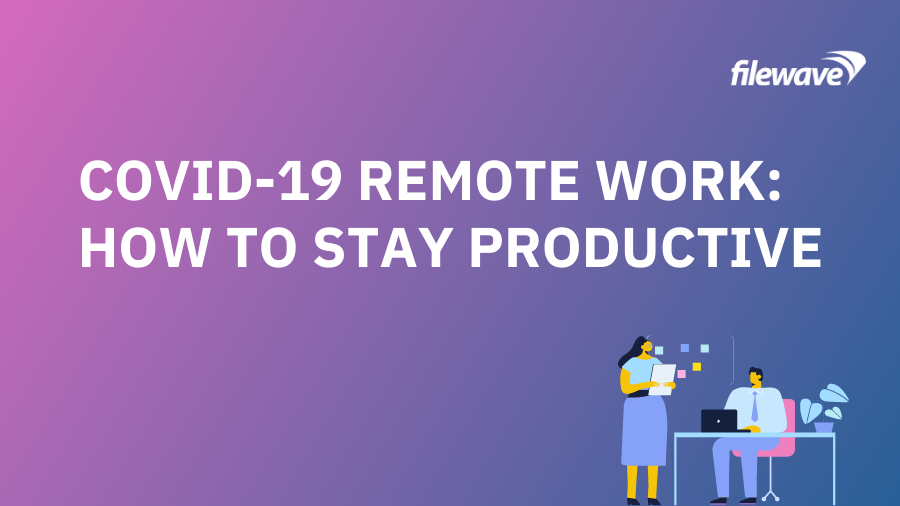Technology isn’t just a tool for your workers to do their job – tech represents an opportunity to empower your employees for better outcomes.
Empowered employees are motivated to reach high, driving their own performance, satisfaction, and business success. Conversely, a lack of employee empowerment leads to disengagement and high turnover. The challenge lies in finding how best to empower employees.
Many of the ways we empower employees today recognizes a changing workforce. According to PwC’s Workforce of the Future study, more socially conscious organizations are emerging, driven by a focus on doing right by employees and the wider world. At the same time, innovation, automation, and competition are forcing companies to focus on nurturing agility, adaptability, and re-skilling of employees.
From the outside, these pressures are driving home the importance of empowering employees to fit this new model of the workforce. From the inside, additional forces are at play driving new employee expectations. The advent of new technology and new service levels (think Uber) keep raising the bar, with employees bringing these consumer expectations to their workplace environment. Organizations must think of new solutions to adapt to a digital workplace to enhance not just employee productivity, but also employee satisfaction and retention.
How to Empower Employees
Research has indicated the following could contribute to empowered employees:
- Empowered leadership that encourages ideas, creativity, and helpfulness in balance with employee expectations. Leadership is key in driving and communicating the vision of the organization.
- Give employees autonomy, which can extend to assignments, tools, or even devices.
- Set clear expectations, which provide boundaries for employees in how they can make decisions that align with company vision. Expectations take away uncertainty or added pressure with being given too much freedom.
- Review and recognize employees for their work.
- Provide resources to employees for troubleshooting or safe places to bounce ideas.
- Recognize the importance of flexibility, meeting employee expectations for vacation time, work-at-home options, flexible scheduling, or even corporate attire.
Technology is currently embedded in everything that we do, impacting the way we live, interact, and experience the world. As a result, improving IT solutions is one of the fastest ways organizations can engage with their employees to make sure they have the tools they need to be happy.
Empower Employees with Device Choice
End users rarely use only a computer anymore. By 2020, it’s expected that the number of connected devices per person will be 6.58 – and chances are, people will want to use more of these devices for work.
Empowering employees to choose their own devices leads to better productivity, collaboration, and mobility. User-centric IT policies, such as BYOD (bring-your-own-device) or CYOD (choose-your-own-device), are not revolutionary anymore and have proved effective in empowering employees to be more productive and achieve better business outcomes. But this added value cannot be ensured without a flexible, multi-platform IT infrastructure to accommodate multiple operating systems and different applications.
By automating deployment and configuration across multiple platforms, IT departments can decrease non-compliance risks associated with unmanaged user habits and ensure that employees have the tools they want and the tools they need to be productive, ensuring those tools are consistent with configuration and security policies.
Empower Employees with Self-Service
One of the consumer expectations often causing the most organizational trouble is the idea of “instant” gratification. Employees who need a new app or who run into a problem want a fix right away. With today’s tech-savvy workforce, many employees have no qualms about finding and downloading their own “solutions” to remain productive. This shadow IT reduces visibility and introduces risk, contributing to $1.7 billion lost to downtime and data loss.
Old-school blacklist policies often turn empowered employees into frustrated employees, making shadow IT a complex problem to tackle. While it is impossible to predict every application employees will need, and pre-loading all those applications would not be cost-effective, feasible, or advised, it is possible to create an environment of self-service that supports user-driven efficiency.
Making optional applications, documents, and resources available to end-users on demand helps employees install pre-approved content without the need to go through IT, which many perceive as “slowing” them down. Invest in a well-stocked self-service kiosk to give employees instant access to applications of their choice.
Interested in how FileWave can contribute to your employees’ empowerment? Sign up for a free demo to see our software in action.


